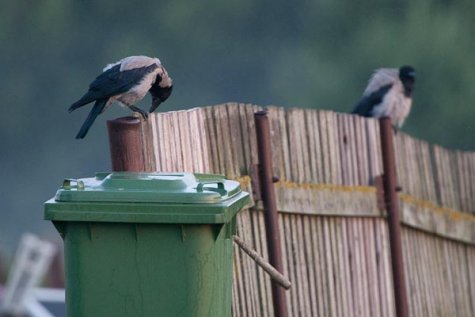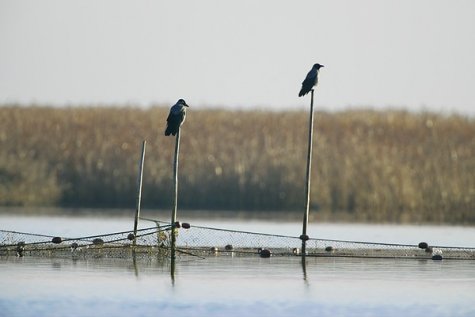Hooded crows on the threshold of winter
Photos: Arne Ader
Translation: Liis
Early morning. Hooded crows on fence
Hooded crow Vares ehk hallvares
Compared to summer the number of crows is nearly doubled in winter – a quarter of a million or even some more.
The winter living places of hooded crows are everywhere: they are clearly more abundant in the urban landscape, forests are less frequented but on the seashore they move the year round: there is food to be found until the sea is completely frozen. A great number of the crows wintering here have arrived here from the north and north-east, moving away from a more severe winter. A part of those that nested here have strayed towards south. Some are stationary birds.
Clever and ready to learn, with many legends and stories about them; incomparable news transmitters even without Internet and anyone who has in any way injured the crow tribe is long remembered, to be punished when opportunity arises.
They often move in groups, in winter they may keep company with jackdaws. The head, neck, wings and feet of hooded crows are black, the remaining plumage ash grey. In winter they catch rodents, feed on carcasses of animals perished on the roads, snatch food waste from thrash bins, on uncleared fields there are grain and in snow-free grounds invertebrates. Crows know how to make dry bread edible by soaking, how to snatch catch from fishermen’s nets – this list can be made long ...
Crows on net posts. Matsalu bay










